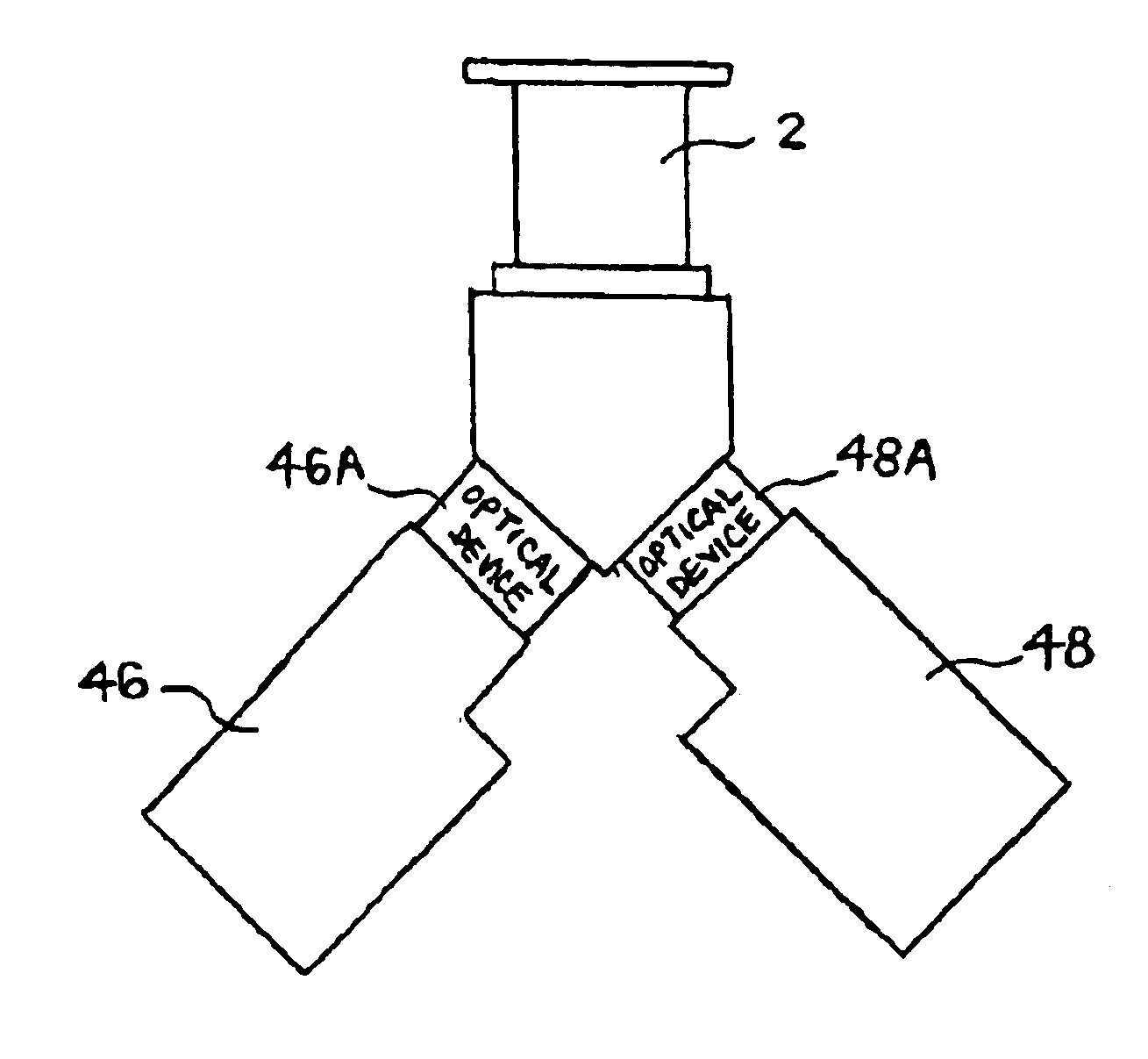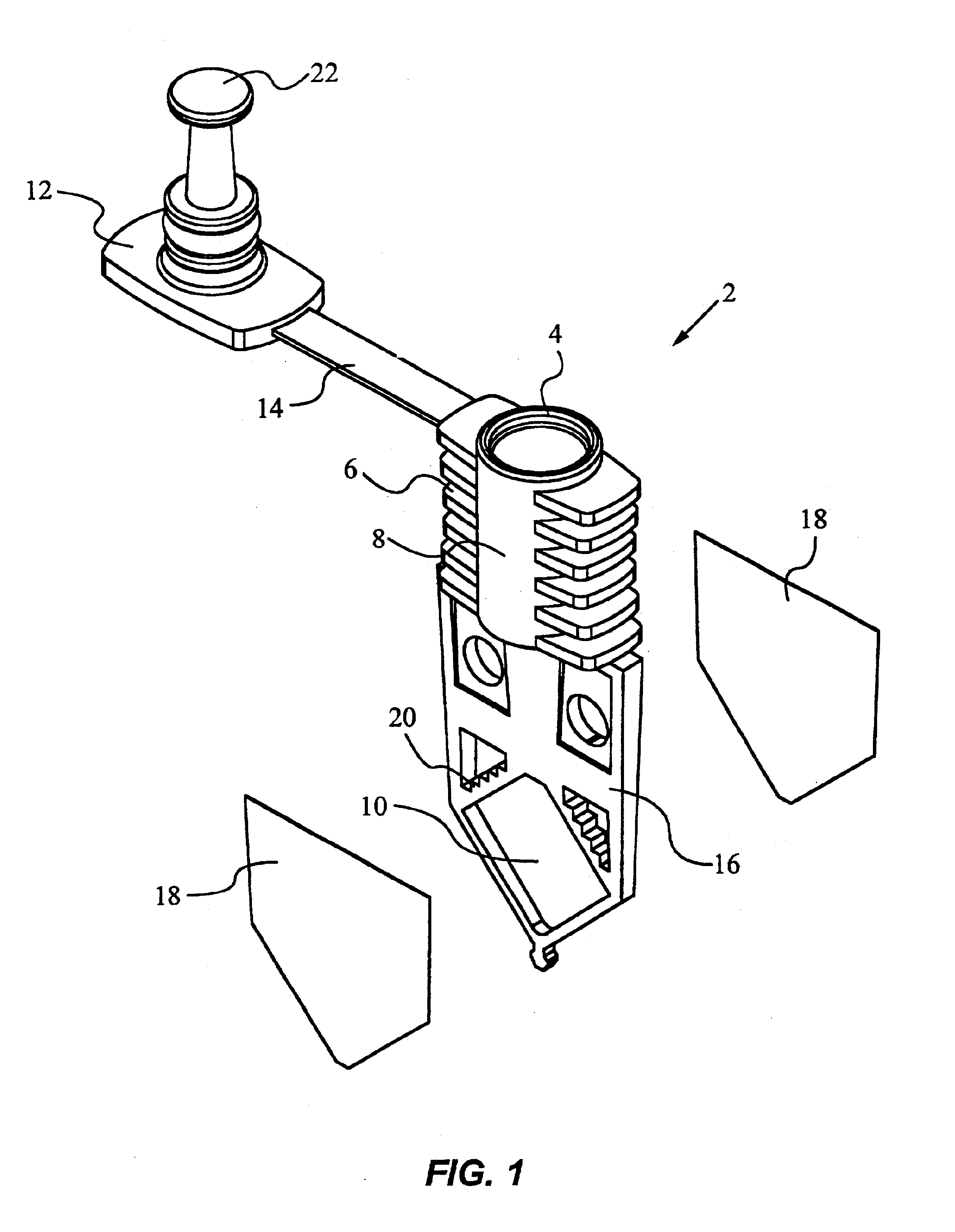Multi-channel optical detection system
a detection system and multi-channel technology, applied in the field of optical detection systems, can solve the problems of long processing time, inefficiency of processes requiring precise temperature control, and affecting the quality of optical radiation measurement, so as to improve reliability, reduce maintenance requirements, and reduce processing time
- Summary
- Abstract
- Description
- Claims
- Application Information
AI Technical Summary
Benefits of technology
Problems solved by technology
Method used
Image
Examples
Embodiment Construction
[0055]The present invention provides a system for thermally controlling and optically interrogating a reaction mixture, e.g., a fluid sample mixed with chemicals or reagents. As used herein, the term “fluid sample” includes both gases and liquids, preferably the latter. The sample may be an aqueous solution containing particles, cells, microorganisms, ions, or small and large molecules, such as proteins and nucleic acids, etc. In a particular use, the sample may be a bodily fluid, e.g., blood or urine, or a suspension, such as pulverized food.
[0056]In a preferred embodiment, the system includes reaction vessels for holding the mixtures and heat-exchanging modules for receiving the vessels. Each heat-exchanging module includes a pair of opposing thermal plates between which one of the vessels is inserted for thermal processing, a fan positioned adjacent the plates for cooling the mixture, one or more temperature sensors for measuring the temperature of the plates, and a pair of optic...
PUM
 Login to View More
Login to View More Abstract
Description
Claims
Application Information
 Login to View More
Login to View More - R&D
- Intellectual Property
- Life Sciences
- Materials
- Tech Scout
- Unparalleled Data Quality
- Higher Quality Content
- 60% Fewer Hallucinations
Browse by: Latest US Patents, China's latest patents, Technical Efficacy Thesaurus, Application Domain, Technology Topic, Popular Technical Reports.
© 2025 PatSnap. All rights reserved.Legal|Privacy policy|Modern Slavery Act Transparency Statement|Sitemap|About US| Contact US: help@patsnap.com



